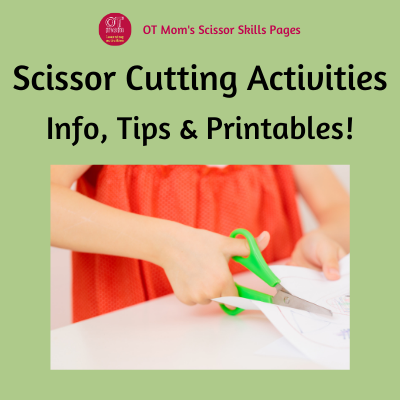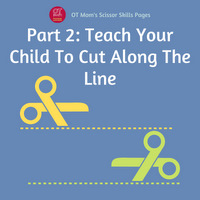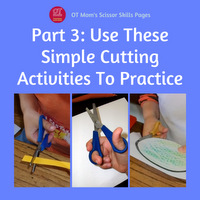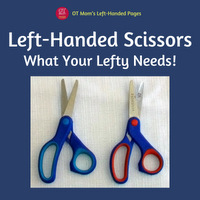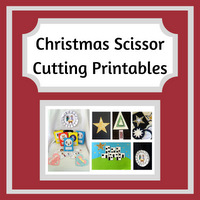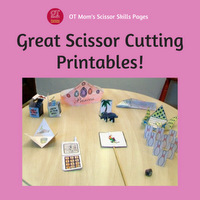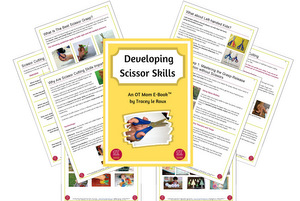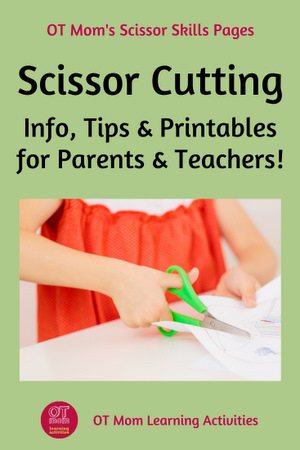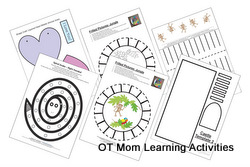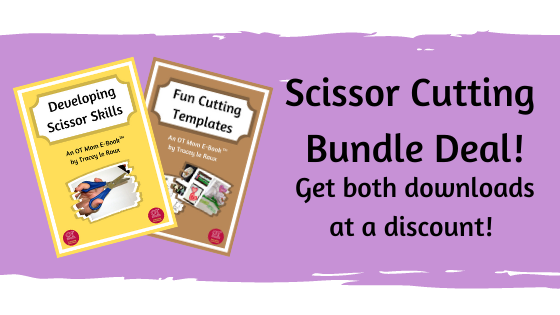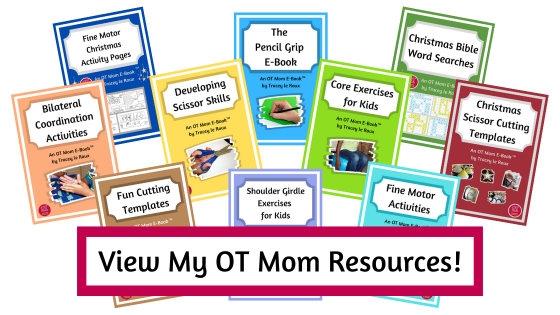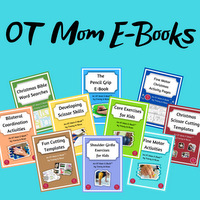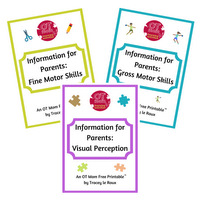- Home Page
- Scissor Cutting Skills
Scissor Cutting Skills
Scissor cutting is an important fine motor skill, which can help lay the foundation for good pencil control. When your child is holding the scissors correctly, then cutting out will help strengthen your child's hand muscles, particularly the muscles that will be used for handwriting.
Cutting out a shape involves bilateral coordination between the hand holding the scissors and the hand holding the paper. In addition, your child needs to visually focus on the line in order to guide the hands, and also needs to plan how to get the scissors in and out of corners.
So as you can see, helping your child learn to cut with scissors is a very important part of his/her development!
I sometimes link to products (#Ad) that are similar to those I use and love. If you do purchase something through my links, I will receive a small commission that helps support my site - thank you!
Getting Started: First Steps In Learning to Cut
If your child is still very young, and/or has no clue how to cut out, then these articles are the best place for you to start.
I created a three-part series to help preschoolers master scissor cutting skills:
- Part 1 will help your child master the grasp-release motion of the scissors
- Part 2 will help your child master the art of cutting along a line
- Part 3 gives you lots of super simple ideas for cutting activities to help your child
Practicing Scissor Skills: More Tips
When your child holds scissors with the correct scissor grasp, the hand and finger muscles will be strengthened and get lots of fine motor practice. Read my page to find out more, including how to hold scissors with different kinds of holes.
Is your child left-handed? Are you wondering whether you really need to get a pair of left-handed scissors for kids? Read on to find out how true left-handed scissors can help your child.
Printable Scissor Cutting Activities
These lovely printable resources provide printable cutting sheets and photographed instructions to help your child make something specific - no more piles of cut up worksheets!
All of these fun cutting activities for kids have a tangible end product, to help your child grow in confidence and master cutting with scissors
What Other Skills Help With Scissor Cutting?
When your child is cutting out with scissors, one hand is making the scissors open and close, while the other hand is holding the paper. It gets more complicated when your child has to cut out a shape - then the assistant hand needs to turn the paper around while the other hand cuts!
Your child needs good bilateral coordination skills in order to get the scissors and paper working together, and for this reason, I often recommend bilateral coordination activities to help kids build this skill.
In addition, your child needs to visually focus on the line to help make the scissors stay on the line. Eye-hand coordination activities and visual motor integration activities can help with this skill.
If your child is squinting, rubbing the eyes, or has watering eyes while focusing on a cutting task, please consult a behavioral optometrist.
More Resources
- Left Handed Scissors
If you are looking for true left handed scissors for kids in your home or class, then I have linked to a few on Amazon for your convenience. These are similar to ones I use myself. (Read my articles to find out how left-handed scissors differ from right handed scissors, and why left-handed scissors are a thing!)
- Lefty's True Left-Handed Scissors#Ad Blunt-nosed, suitable for younger children
- Fiskars Left-Handed Scissors#Ad Sharper nose, suitable for more experienced kids
- Right Handed Support Scissors
Sadly, I am yet to find support scissors for lefties, which is very frustrating. If you come across any, please do let me know! But until then, here are some support scissors on Amazon that can be helpful to right handed kids who are new to cutting or struggling with the cutting motion. (Don't forget to read my page of tips to help your child master the grasp-release motion)
- Fiskars basic blunt nosed scissors#Ad
- Fiskars Preschool Spring Action Scissors#Ad
- Maped Spring Assisted Scissors#Ad
- Mini loop scissors for kids with very weak hands#Ad
- Printable Downloads
If you found these pages helpful, you can download all of this plus MUCH more in my 33 page Scissor Skills E-book.
This download will help answer your questions, and will give you step by step photographed activities to help your child master scissor skills.
I hope you found this page of scissor cutting resources to be helpful!
Please do share with other parents and teachers - being able to cut with scissors is such an important fine motor skill!
Why not sign up for my occasional newsletter, to stay in touch with new and updated articles on my site?
- Home Page
- Scissor Cutting Skills
Share this page to help others!
References
Mitchell, A. W., Hampton, C., Hanks, M., Miller, C., & Ray, N. (2012). Influence of task and tool characteristics on scissor skills in typical adults. American Journal of Occupational Therapy, 66, e89–e97. https://dx.doi.org/10.5014/ajot.2012.004135
Ratcliffe, I., Concha, M. & Franzsen, D. (2007). Analysis of cutting skills in four and six year olds attending nursery schools in Johannesburg. South African Journal of Occupational Therapy. 37. 4-9.
Ratcliffe, I., Franzsen, D., & Bischof, F. (2010). Development of a scissors skills programme for grade 0 children in South Africa - A pilot study. South African Journal of Occupational Therapy. 41. 24-31.
Smith, Barbara A. MS, OTR/L. From Rattles to Writing – A Parent’s Guide to Hand Skills. 2011. Therapro Inc.
Help Your Child Master Scissors
Is your child struggling to cut neatly with scissors?
Do you want to teach your preschooler how to cut with scissors but don't know where to start?
My 33 page Scissor Skills E-book will help answer your questions, and will give you step by step photographed activities to help your child master scissor skills.
My Fun Cutting Templates E-book gives you 19 different scissor cutting templates to enable your child to learn to cut on straight lines and then to cut out shapes. All the activities are photographed so you and your child can see what you are working towards!
View My Scissor Skills and Cutting Templates Bundle!
Didn't find what you were looking for? Try a search of my site!
